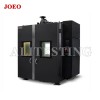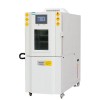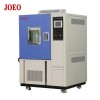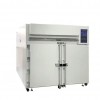HASS Chambers are extensively utilized in various industries such as electronics manufacturing, automotive, aerospace, defense, telecommunications, devices, semiconductor, industrial equipment, consumer electronics, energy, transportation, oil and gas, marine, and railways. These chambers play a crucial role in conducting reliability testing to enhance product quality and reliability.
.gif)
Feature:
1. Temperature Control: HALT & HASS Chambers offer precise temperature control over a wide range to create extreme thermal stress conditions.2. Vibration Control: These chambers are equipped with vibration systems capable of generating intense and random vibration profiles. This feature helps identify and induce weaknesses in products.
3. Combined Testing: The chambers allow for simultaneous exposure to both environmental stresses, such as temperature and vibration, replicating real-world conditions more accurately.
4. Rapid Temperature Change: HALT & HASS Chambers can achieve rapid temperature transitions to stimulate product failures caused by thermal cycling.
1.jpg) |
.jpg) |
5. Automated Testing: These chambers are often equipped with advanced control systems that allow for automated testing, data acquisition, and analysis.
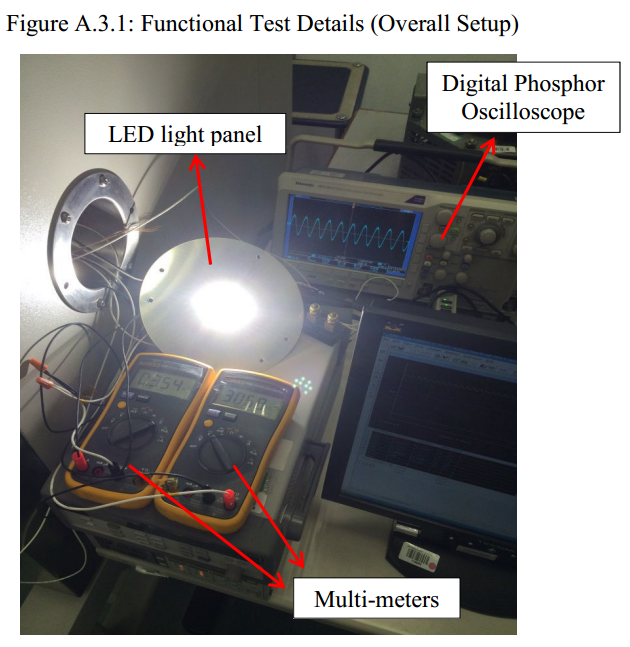
6. Stress Exceeding Limits: HALT (Highly Accelerated Life Testing) Chambers can subject products to stress levels exceeding their operational limits, revealing weak points and potential failure modes earlier in the development cycle.
7. HASS (Highly Accelerated Stress Screening): These chambers are designed for rapid and intense stress screening to eliminate infant mortality failures before products are shipped to customers.
1.jpg) |
2.png) |
3.png) |
8. Enhanced Reliability: HALT & HASS Chambers help identify potential design and manufacturing weaknesses, leading to improved product reliability and durability.
9. Customization Options: Manufacturers offer a range of chamber sizes and configurations to accommodate different product types and test requirements.
Meet standard:
ESS process : Mil Std 2164(EC)JSS on Environmental test methods: JSS 55555
Test method standard and laboratory tests: Mil Std 810F
Requirements for EMI/EMC for tems and equipments : Mil std 461E
standard for Aircraft Electrical power considerations : Mil std 704E
General requirements and norms of quality of Electrical Energy: GOST 19705-89
Lighting Induced Transient susceptibility: RTCA DO 160E (Chapter 22)
Components used in design of EW & avionics systems: Mil std 883E
COTs Components used in design of EW & avionics systems: Industrial grade
.jpg)
Need more information or need customize ,please contact our sales team to Get Quote Today!


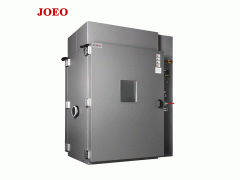
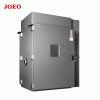


.gif)
